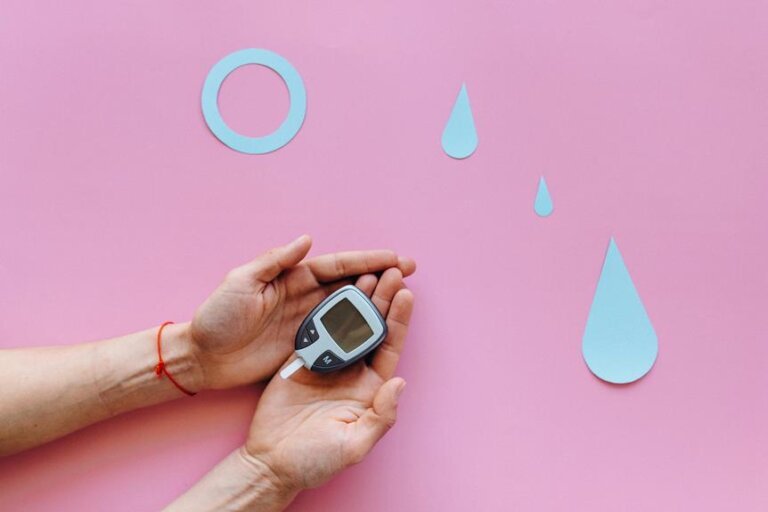dead in bed syndrome type 2 diabetes
Diabetes has become a global epidemic, affecting millions of people worldwide. According to the World Health Organization, the number of individuals living with diabetes has risen from 108 million in 1980 to 422 million in 2014. Among the various types of diabetes, type 2 diabetes is the most common, accounting for around 90% of all cases. This chronic metabolic disorder is characterized by high levels of glucose in the blood, caused by the body’s inability to produce or properly use insulin. Along with its well-known complications such as heart disease, kidney failure, and vision loss, type 2 diabetes has been linked to a lesser-known condition known as “dead in bed syndrome.” This syndrome, also known as nocturnal hypoglycemia, is a sudden and unexplained death that occurs in individuals with diabetes while they are asleep. In this article, we will delve into the causes, risk factors, and prevention methods of “dead in bed syndrome” in individuals with type 2 diabetes.
Understanding the link between diabetes and dead in bed syndrome.
Type 2 diabetes is a chronic condition characterized by high blood sugar levels and impaired insulin function. Individuals with type 2 diabetes are at an increased risk of developing various complications, including cardiovascular disease, kidney damage, and nerve damage. One lesser-known but potentially life-threatening complication is the phenomenon known as “dead in bed syndrome.” This term refers to the sudden and unexplained death of individuals with type 2 diabetes who are found deceased in their beds. While the exact cause of dead in bed syndrome remains unclear, research suggests that it may be linked to the autonomic neuropathy, a condition commonly seen in individuals with long-standing type 2 diabetes. Autonomic neuropathy affects the autonomic nerves that control various involuntary bodily functions, including blood pressure regulation and heart rate. Dysfunction in these nerves may contribute to a dysregulated response to hypoglycemia during sleep, potentially leading to fatal outcomes. Understanding the potential link between diabetes and dead in bed syndrome is crucial for healthcare professionals to implement appropriate preventive measures and interventions to minimize the risk of this tragic complication in individuals with type 2 diabetes.
Identifying the symptoms of type 2 diabetes.
Type 2 diabetes is a prevalent chronic condition that affects millions of people worldwide. Identifying the symptoms of type 2 diabetes is crucial for early detection and management of the disease. Common symptoms include frequent urination, excessive thirst, unexplained weight loss, increased hunger, fatigue, blurred vision, slow-healing wounds, and recurring infections. These symptoms arise as a result of the body’s inability to effectively utilize insulin, leading to elevated blood sugar levels. It’s important to note that some individuals may not exhibit any symptoms or may have mild symptoms that go unnoticed. Regular health check-ups, including blood glucose tests, are essential for identifying and monitoring type 2 diabetes, allowing for timely intervention and prevention of complications.
Managing blood sugar levels effectively.
Managing blood sugar levels effectively is crucial for individuals with type 2 diabetes to maintain their overall health and prevent complications. A combination of healthy lifestyle choices and medication management can help achieve optimal blood sugar control. Firstly, maintaining a balanced and nutritious diet that is low in refined carbohydrates and high in fiber can help regulate blood sugar levels. This includes consuming whole grains, lean proteins, fruits, and vegetables while limiting sugary foods and beverages. Regular physical activity, such as aerobic exercises and strength training, can also improve insulin sensitivity and assist in managing blood sugar levels. Additionally, closely monitoring blood glucose levels through regular self-testing and working closely with healthcare professionals to adjust medication dosages can further enhance diabetes management. By adopting these strategies, individuals with type 2 diabetes can proactively take control of their blood sugar levels and reduce the risk of complications associated with the disease.
The importance of regular exercise.
Physical exercise plays a vital role in the overall health and well-being of individuals, especially those with type 2 diabetes. Regular exercise helps improve insulin sensitivity, allowing the body to utilize glucose more effectively and maintain stable blood sugar levels. Engaging in activities such as aerobic exercises, strength training, and flexibility exercises not only helps control blood sugar levels but also promotes weight management, reduces the risk of cardiovascular diseases, and improves overall cardiovascular fitness. Additionally, exercise can aid in stress reduction, enhance mood, and contribute to better sleep quality. Incorporating regular exercise into a diabetes management plan can significantly improve long-term health outcomes and overall quality of life.
Making healthy dietary choices.
Maintaining a balanced and nutritious diet is crucial for managing type 2 diabetes and reducing the risk of complications associated with the disease. Making healthy dietary choices can help regulate blood sugar levels, control body weight, and improve overall health. It is recommended to focus on consuming whole, unprocessed foods that are rich in fiber, such as fruits, vegetables, whole grains, and legumes. These foods provide essential vitamins, minerals, and antioxidants while keeping you feeling full and satisfied. Additionally, incorporating lean sources of protein, such as poultry, fish, tofu, and beans, can help stabilize blood sugar levels and promote healthy weight management. Limiting the intake of saturated and trans fats, sodium, and added sugars is also important for maintaining optimal cardiovascular health and preventing other chronic diseases. By adopting a well-rounded and nutritious eating plan, individuals with type 2 diabetes can take control of their health and reduce the risk of complications.
Monitoring for potential complications.
Regular monitoring for potential complications is an essential aspect of managing type 2 diabetes effectively. This involves regular check-ups and screenings to assess the condition of vital organs and detect any early signs of complications. Monitoring may include regular blood glucose testing, blood pressure checks, lipid profile assessments, and kidney function tests. These measures help healthcare professionals identify and address any issues promptly, allowing for early intervention and treatment. Additionally, maintaining a healthy lifestyle, including regular physical activity and adherence to prescribed medications, can greatly reduce the risk of complications and improve overall well-being. It is important for individuals with type 2 diabetes to work closely with their healthcare team and follow their guidance to ensure timely monitoring and prevention of potential complications.
Seeking medical help when necessary.
It is crucial for individuals with type 2 diabetes to recognize the importance of seeking medical help when necessary. While self-management and lifestyle modifications play a significant role in managing the condition, there are instances where professional intervention is required. This may include situations such as uncontrolled blood glucose levels despite efforts to manage them, persistent or worsening symptoms, or the development of new health concerns. Seeking medical help allows for a thorough assessment of the individual’s condition, adjustment of treatment plans if necessary, and timely management of any potential complications. Healthcare providers possess the expertise and resources to provide comprehensive care and support, ensuring the best possible outcomes for individuals with type 2 diabetes. By actively engaging with healthcare professionals and promptly addressing any concerns, individuals can reduce the risk of complications and optimize their overall health and well-being.
Taking control of your health.
Title: Dead in Bed Syndrome Type 2 Diabetes
Maintaining control over your health is essential for individuals with type 2 diabetes. By actively engaging in self-management strategies and making informed choices, you can significantly improve your overall well-being and reduce the risk of complications. Regular exercise, a balanced diet, and consistent monitoring of blood glucose levels are essential components of taking control of your health. Adopting a proactive approach involves staying informed about the latest advancements in diabetes management, attending regular check-ups with healthcare professionals, and seeking guidance whenever necessary. By actively participating in your healthcare journey, you can empower yourself with the knowledge and tools needed to effectively manage your condition and lead a fulfilling life. Remember, taking control of your health is a lifelong commitment that can bring about positive changes and improve your quality of life.
In conclusion, while the concept of “dead in bed syndrome” may seem alarming, it is important for individuals with type 2 diabetes to be aware of the potential risks associated with this condition. By maintaining a healthy lifestyle, regularly monitoring blood sugar levels, and seeking proper medical care, individuals can mitigate the chances of experiencing this rare but deadly syndrome. As always, it is crucial to stay informed and proactive in managing one’s health to prevent any complications from arising.




